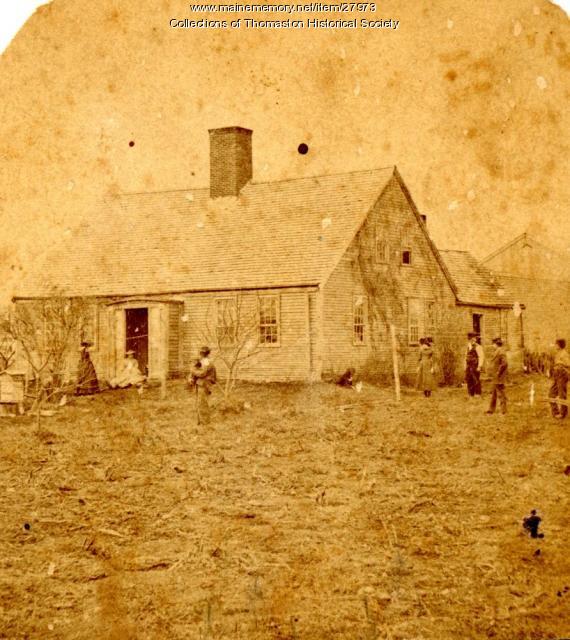Keywords: Hard work
Item 74839
Contributed by: Maine Historical Society Date: circa 1953 Media: Fiberglass
Item 6125
Ryan-Parker Construction, ca. 1900
Contributed by: Maine Historical Society Date: circa 1900 Location: Deer Isle Media: Photographic print
Exhibit
Several Mainers have run for president or vice president, a number of presidents, past presidents, and future presidents have had ties to the state or visited here, and, during campaign season, many presidential candidates and their family members have brought their campaigns to Maine.
Exhibit
Settlers' clothing had to be durable and practical to hold up against hard work and winters. From the 1700s to the mid 1800s, the women of Maine learned to sew by making samplers.
Site Page
John Martin: Expert Observer - Reed Hardings neighborhood, Hampden, ca. 1833
"Reed Hardings neighborhood, Hampden, ca. 1833 Contributed by Maine Historical Society and Maine State Museum Description John Martin of…"
Site Page
Thomaston: The Town that Went to Sea - Beniah Harding
"Beniah Harding Beniah Harding Interview, Clip One Three 10th grade students interviewed local resident Beniah C."
Story
Growing up in Lewiston
by Kathy Becvar
Growing up in Lewiston in the 1960s and 1970s.
Story
Growing up on a potato and dairy farm
by Paula Woodworth
Life growing up and working on a potato and dairy farm was hard work but fun in Aroostook County.
Lesson Plan
Longfellow Studies: "Evangeline: A Tale of Acadie"--Selected Lines and Illustrations
Grade Level: 6-8, 9-12
Content Area: Social Studies, Visual & Performing Arts
Henry Wadsworth Longfellow, Maine's native son, is the epitome of Victorian Romanticism. Aroostook County is well acquainted with Longfellow's epic poem, Evangeline, because it is the story of the plight of the Acadians, who were deported from Acadie between 1755 and 1760. The descendants of these hard-working people inhabit much of Maine, New Brunswick, and Nova Scotia.
The students enjoy hearing the story and seeing the ink drawings. The illustrations are my interpretations. The collection took approximately two months to complete. The illustrations are presented in a Victorian-style folio, reminiscent of the family gathered in the parlor for a Sunday afternoon reading of Evangeline, which was published in 1847.
Preparation Required/Preliminary Discussion:
Have students read "Evangeline A Tale of Acadie". Give a background of the Acadia Diaspora.
Suggested Follow-up Activities:
Students could illustrate their own poems, as well as other Longfellow poems, such as: "Paul Revere's Ride," "The Village Blacksmith," or "The Children's Hour."
"Tales of the Wayside Inn" is a colonial Canterbury Tales. The guest of the inn each tell stories. Student could write or illustrate their own characters or stories.
Appropriate calligraphy assignments could include short poems and captions for their illustrations. Inks, pastels, watercolors, and colored pencils would be other appropriate illustrative media that could be applicable to other illustrated poems and stories. Each illustration in this exhibit was made in India ink on file folder paper. The dimensions, including the burgundy-colors mat, are 9" x 12". A friend made the calligraphy.













